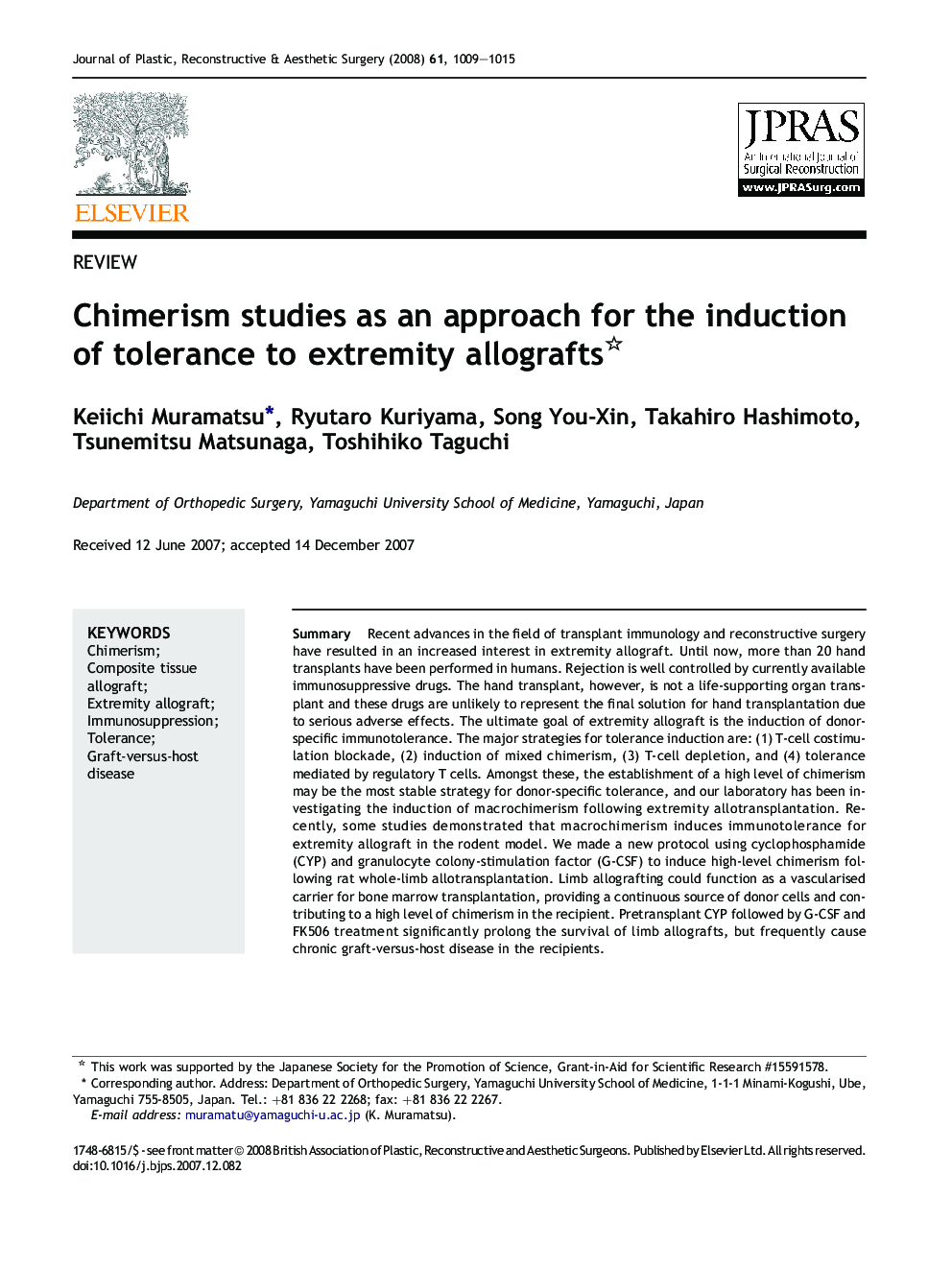| Article ID | Journal | Published Year | Pages | File Type |
|---|---|---|---|---|
| 4120478 | Journal of Plastic, Reconstructive & Aesthetic Surgery | 2008 | 7 Pages |
SummaryRecent advances in the field of transplant immunology and reconstructive surgery have resulted in an increased interest in extremity allograft. Until now, more than 20 hand transplants have been performed in humans. Rejection is well controlled by currently available immunosuppressive drugs. The hand transplant, however, is not a life-supporting organ transplant and these drugs are unlikely to represent the final solution for hand transplantation due to serious adverse effects. The ultimate goal of extremity allograft is the induction of donor-specific immunotolerance. The major strategies for tolerance induction are: (1) T-cell costimulation blockade, (2) induction of mixed chimerism, (3) T-cell depletion, and (4) tolerance mediated by regulatory T cells. Amongst these, the establishment of a high level of chimerism may be the most stable strategy for donor-specific tolerance, and our laboratory has been investigating the induction of macrochimerism following extremity allotransplantation. Recently, some studies demonstrated that macrochimerism induces immunotolerance for extremity allograft in the rodent model. We made a new protocol using cyclophosphamide (CYP) and granulocyte colony-stimulation factor (G-CSF) to induce high-level chimerism following rat whole-limb allotransplantation. Limb allografting could function as a vascularised carrier for bone marrow transplantation, providing a continuous source of donor cells and contributing to a high level of chimerism in the recipient. Pretransplant CYP followed by G-CSF and FK506 treatment significantly prolong the survival of limb allografts, but frequently cause chronic graft-versus-host disease in the recipients.In this review, recent experimental chimerism studies are presented for tolerance induction and we review the prospect of clinical applicability in extremity allograft.
